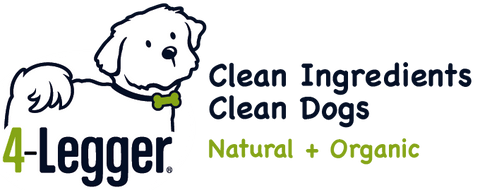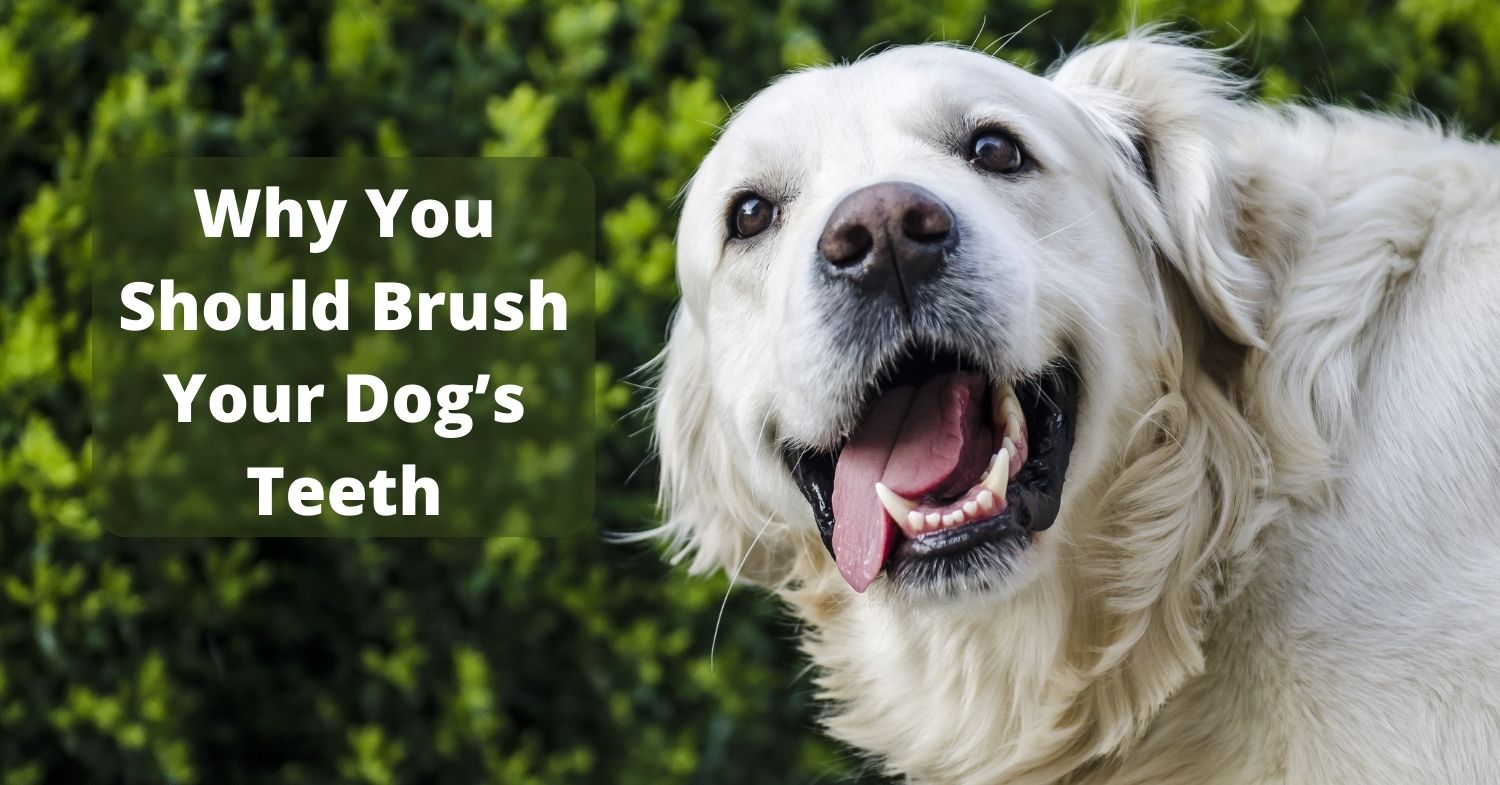Why You Should Clean Your Dog's Teeth
The Importance of Canine Dental Care: Why Cleaning Your Dog's Teeth is Essential
Celebrating National Pet Dental Health Month, it's time to spotlight the crucial role dental health plays in your dog's overall wellness!
Did you know? The American Veterinary Dental Society reports that by age three, about 80% of dogs exhibit signs of oral disease.
Here's the silver lining: You can actively prevent oral disease in your dog through regular teeth and gum cleaning!
But, what's the best way to clean your dog's teeth? Is there a particular method you should use? And which products are both safe and effective?
Join us as we delve into the world of canine dental care.
We'll explore why maintaining your dog's dental hygiene is a vital component of their health regimen, and offer practical advice and techniques to simplify the cleaning routine for you and your beloved four-legged family!
The Importance of Canine Dental Care
Just like humans, dogs are susceptible to plaque and tartar buildup, which can lead to a host of dental issues such as gum disease, tooth decay, tooth loss, infections, and even heart disease or other systemic issues including long term organ damage if not addressed.It's important to be aware of the signs of dental problems in dogs. Some common signs include:
- Bad breath: Persistent bad breath can be a sign of dental disease in dogs.
- Red or swollen gums: Healthy gums should be pink and firm. If you notice redness or swelling, it may indicate an underlying dental issue.
- Difficulty eating: If your dog is having trouble chewing or swallowing, it may be a sign of dental pain or discomfort.
- Loose or missing teeth: Loose or missing teeth can indicate advanced dental disease and should be addressed by a veterinarian.
If you notice any of these signs, it's important to consult with your veterinarian.
Diving deeper into canine oral care reveals that regular dental maintenance, like brushing your dog's teeth, is vital. This routine not only removes plaque and tartar, reducing the risk of gum disease and tooth decay, but also freshens breath and enhances overall oral health.
Integrating consistent dental care into your dog's daily routine is crucial for both improving oral health and potentially extending their lifespan.
The Benefits of Cleaning Your Dog's Teeth
Introducing oral care to your dog takes time and patience. The key is to start slow and make the experience positive. Here is a step-by-step guide to help you through the process using 4-Legger Dental Powder:
- Start early: It's best to start brushing your dog's teeth when they are still a puppy. This will help them get used to the sensation and make it part of their daily routine.
- Choose the right time: Find a time when your dog is relaxed and calm, such as after a walk or play session. Avoid cleaning their teeth when they are overly excited or tired as it typically won't go well.
- Select the location: Identify where you are going to clean their teeth and keep the location consistent so they know and understand what to expect.
-
Start with your finger: For the first few sessions, use your finger to get your dog used to the sensation of having their teeth brushed. Gently rub your finger along their gums and teeth in a circular motion. The first session may be just a few quick seconds. Each session should increase the time until they are used to the sensation. Go to Step #8 after each session!
-
Introduce the cleaning technique: Once your dog is comfortable with your finger, it’s time to start cleaning. Building on the same technique of using your finger, add a small piece of damp gauze over your fingertip and repeat the session to allow your dog to get used to the new sensation of the gauze. Remember when you clean your dog's teeth to not press in to the teeth. You are simply cleaning - not trying to scrape anything off the teeth.
-
Gently brush in a circular motion: Hold your gauze-covered finger at a 45-degree angle to your dog's teeth and gently brush in a circular motion. Focus on the gum line and all surfaces of the teeth.
- Introduce the tooth powder: Now that they have gotten used to the sensation of rubbing and gentle agitation, it is time to introduce the dental powder! Pour a tiny amount (pea size) of dental powder into your other palm. Dip your finger with the damp gauze into the powder and rub along the gum line and in a circular motion on the teeth to gently agitate.
-
Reward and praise: After each successful toothbrushing session, reward your dog with a high value treat, praise, and affection to positively reinforce the experience. I stress that you should give a high value treat over the usual treat. Dogs absolutely know the difference between a high value reward and your run of the mill reward. If you can make this reward so special that they ONLY get it after teeth brushing, even better!
A Word About How 4-Legger Dental Powder Works
Our dental hygiene product is quite a bit different than anything else available in the market and it is based on basic canine physiology. Dogs have their own natural tools for keeping their mouths clean in the form of enzymes contained in their saliva intended to control germs and bacteria. 4-Legger Dental Powder takes advantage of this basic physiological principle by using ingredients formulated to stimulate the salivary glands thus releasing a dog’s natural defense to clean and neutralize germs and bacteria. This is why only a tiny amount of 4-Legger Dental Powder is needed. Once you see that your dog has begun salivating, no more dental powder is needed to complete the oral hygiene session. Additionally, we are not big fans of using a toothbrush or other “nubby” tool in your dog’s mouth. Using these types of tools do not allow adequate sensory feedback to you with regard to how much pressure you are applying to this sensitive area of tissue in the mouth. Conversely, when you are using your finger, you will get sufficient sensory feedback and ensure that you will not inadvertently hurt your dog’s gums. A final note: If your dog has a diagnosed medical condition that limits sodium intake, you will of course want to have your veterinarian approve usage.
What Tooth Paste Or Other Product To Use On Your Dog?
Next week we are going to take a deep dive into natural dog toothpaste and the ingredients in dog toothpaste.
For now, let's bookmark that you should not use human toothpaste on your dog and you need to carefully scrutinize the ingredients to make sure you are using a dental product with truly safe and non-toxic ingredients.
Stay away from artificial flavors and colors!
Other Preventative Measures to Dental Health
While brushing your dog's teeth is the most effective way to maintain their dental health, there are a few other things you can also do to supplement your oral hygiene efforts:
- Feed a nutritionally balanced, species appropriate diet. When your dog gnaws on meat and veggies, it acts as a natural toothbrush and dental floss.
- Offer raw bones and fully digestible, high quality dog chews to help control plaque and tartar. The effect of dental chews is similar to raw bones but safer for power chewers or dogs who can't chew raw bones. It is important to look at the ingredients and safety history of all chews before you give them to your dog and to dispose of them when they get small enough to be a choking hazard.
IMPORTANT: - Never give your dog cooked meat bones. Cooked bones can splinter and inflict serious injury to your pet's mouth, trachea and gastrointestinal tract.
- There are a number of new products - and even foods - claim to help clean your pet's teeth. They include specially treated kibble, treats, chews, oral sprays, oral gels, and even water additives. To create many of these so called dental care kibble and treats, manufacturers coat the food with a synthetic polymer called sodium hexametaphosphate (SHMP). According to its Material Safety Data Sheet, SHMP can be hazardous to humans if swallowed. A study on rats found it negatively affected their kidneys, growth, bones, muscles, liver, and thyroid. Avoid all products with SHMP and look at all of the ingredients in every product before you give it to your dog.
- Regular dental check-ups with your veterinarian are essential to catch any dental issues early on and prevent further complications. In some cases, a professional cleaning may be warranted. If your vet makes that recommendation, it is probably best to have it done if your dog is healthy and able to go under anesthesia to have the cleaning so they can start with a clean slate and you can implement an effect program for keeping their mouth healthy. We recommend a holistic detox for your dog from the anesthesia after the cleaning.
Preventative Measures for Good Canine Dental Health
Taking care of your dog's dental health is crucial for their overall well-being. By incorporating regular dental care into their routine, you can prevent dental problems, improve their oral health, and even lengthen their lifespan. Remember to start early, use the right tools, and make the experience positive for your furry friend. Your dog's smile will thank you!





